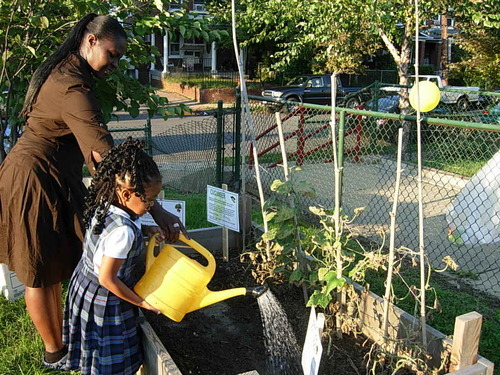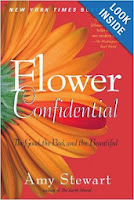For our November 2013 Washington Gardener Magazine
Reader Contest, we asked “What
Garden Task You Always Procrastinate On and Why?”
 We received a
tremendous response and I have grouped the dreaded chores below. It seems that
no aspect of gardening is immune to being put off to another day. Even the most devoted gardeners I know seem to find one chore that they loathe and ignore from weeks on end. For me, it is cleaning out the beds in early spring. I think that it is more the cold than anything that makes me out it off.
We received a
tremendous response and I have grouped the dreaded chores below. It seems that
no aspect of gardening is immune to being put off to another day. Even the most devoted gardeners I know seem to find one chore that they loathe and ignore from weeks on end. For me, it is cleaning out the beds in early spring. I think that it is more the cold than anything that makes me out it off.
We selected one of
the submitted entries at random to the Washington Gardener Local
Gardening Task Calendar. Each
month includes a list of what to do in the garden for local DC-MD-VA and
Mid-Atlantic gardeners, along with a gorgeous photo of a seasonal flower from a
local DC-area public gardens’ collection. The calendar winner of our hot-off-the-press 2014 Local
Gardening Task Calendar is Ellen McBarnette of Washington, DC.
Congratulations, Ellen, we hope the task calendar hopes curb your
procrastination in 2014!
.
If you did not win a calendar, you can order one for yourself and as gifts for
your favorite local gardeners by going to:
http://www.cafepress.com/washgardener.
(Note that you can select the calendar to start with whatever month you
choose.)
What Garden Task You Always
Procrastinate On and Why:
PRUNING
UGH... pruning the three azaleas in front of my front bay
window! Since these three rarely get to flower due to their being located
outside my deer exclosure and therefore constantly de-budded, they do need to
be trimmed back every year to keep the scraggly branches below the window area.
So, constant, tight-space, maintenance, and NO FLOWERS!!!! (Thanks! Love the
mag!)
~ Alison Regan
I procrastinate on pruning because I always forget when I'm
supposed to prune the different types of bushes.
~ Mary Lane Renninger
The garden task I most procrastinate in doing is trimming
the bigger bushes. Of course, a good reason they are bigger is because I
keep putting off the shaping and trimming. But it’s so much work to do it
right - clip, eyeball it, clip again. The best ones are those that need
minimal clipping, like the nandinas. But those spireas are a challenge to
keep in their space. And in order to keep them blooming, I need to trim
them 2 or 3 times/ season. Ugh!
~ Alberta
Mikulka
WEEDING
Another year has passed, and my resolution to eliminate the
horrible oriental bittersweet in my woods is still unfulfilled. In the spring
and fall, I am too busy planting, in the summer it is too hot and the ground
too hard, and now it is too cold. I should knuckle under and hire someone!
~ Margaret Fisher
Weeding, because it's tedious work.
~ Sylvia Midgett
PLANTING
What I most procrastinate on: Planting! I buy plants at a
sale because they’re cool and of course don’t have a clue where I’m going to
put them. So they sit under the maple tree in the front yard until I figure it
out. Also: spraying plants to keep the deer away. Just nasty!
~ Sherry Marshall
I always procrastinate on planting my bulbs in the fall. I
keep thinking we'll get one more warmish day... and then I end up out there
planting on a not-so-warm day.
~ Anastasia MacDonald
The task I procrastinate on the most is planting!
Sometimes I find something irresistible at the nursery, and buy it
without a specific place in mind for it. Things that I buy for a
particular spot generally get planted promptly, but I suffer from terrible
gardener's indecision for the others. (The plants sometimes suffer too,
as they wait and wait to get in the ground.) This can get to be a
sizeable problem, since I'm a sucker for anything new and different at the
nursery. This fall, I have an absolute goal: My garden club is
going on a great 4-day garden and nursery tour next spring, and I will not
allow myself to sign up for it unless everything--everything--that's still in a
pot has a home. Because I'm bound to find a few more irresistible things
on the trip.
~ Lucy Goszkowski
I always procrastinate planting fall
bulbs. Why? First I want to make sure the ground is cold, and second,
something in me is reluctant to give up on the chance that there will be more
balmy days to come.
~ Anne Hardman
In my pursuit of the eternal summer and the warm season's harvest,
I put off replacing my summer garden for my fall one til it's all too clear
that if I wait any longer, it'll be too late to plant even that. Strange thing
is: I enjoy my fall garden every bit as much as my summer one!
~ Sue Gleason
I procrastinate on starting seedlings. I don't have much
space for starting them in my house, and don't have any special lights set
up. This makes me think I shouldn't bother....and then in late March when
you can smell the earth warming up the urge is too great, and I start a few
seedlings, wishing I'd done so earlier.
~ Alexandria
Lippincott
SEEDLING CARE
I shrink from the odious task of thinning my baby plants.
I know it needs to be done, but I feel just awful cutting their little
heads off. After all, I brought them into this world. But then, .........I just
shake it off and do the deed!
~ Arlene M.
Thinning seed babies because I want to try and save them and
pot them separately to make more plants.
~ Nancy L. OConnor
RAKING
Raking leaves is the task I procrastinate. I claim
I'm not procrastinating, that I am using the leaves to keep my garden from
freezing.
~ Annie Shaw
I leave fallen leaves everywhere -- flower beds, open
spaces, driveways, anywhere they land. Why? Perhaps because I think they should
stay there, right where nature put them. I'd mulch them but my mower's broken
(this year's excuse). Usually I wait till I'm ashamed to have the
neighborhood's messiest front yard. Maybe I'll leave the back yard leaves where
they are this year.
~ Carol Jaka
When you live in an old neighborhood with lots of trees,
especially oaks, doing something with the leaves becomes almost a full
time job. Raking, blowing, composting - whatever is
your "pleasure." In addition, the real procrastination
comes from blowing leaves off an almost flat roof (tar and gravel). You
have to climb up a 20' ladder, haul up the blower and electric cord. In
addition to that you need one or two mulch bags to gather up all of
the fallen branches from the trees. Then you have to blow out the leaves
from the gutters and be careful that you don't clog up the downspouts. Of
course then what do you do with the leaves that came off the roof. Using the
word procrastination is a very mild way of putting this situation.
~ George Graine
DEER PROOFING
About my yuckiest garden task…We have a terrible deer
problem at my house. Fencing the property is not an option because of its
layout, so I have to use deer netting for those plants that really need
protection – mostly azaleas, hydrangeas and mountain laurel. The job I
procrastinate most on in my garden is checking and moving netting when a plant
has grown through it. It has to be done three or four times a year, and
for plants closest to the house I do pretty well. But the plants farther out in
the garden get neglected, and then it takes a really long time to cut away the netting
and put new netting up. I hate standing there and cutting for the long time
that it takes to disentangle lots of new growth – aaargh!
~ Shirlie Pinkham
COMPOSTING
Turning the compost heap. Reason for procrastination: I find
those great big grubs that live in there intimidating...
~ Ellen McBarnette
CLEANING
The task I often procrastinate about is clearing old
desiccated plant material - particularly tomato vines - at the end of the
season in my community garden plot. I've even tried to excuse it by telling
myself the old vines provide good bird habitat.
~ Linette Lander
EDGING
I always procrastinate on edging my garden. I see all
the landscaper companies around making everything look "just so" and
I think it is a matter of pride that my garden definitely has a home-done look,
until I finally finish it off and clear the edges.
~ Patty Friedman
POND MAINTENANCE
I always seem to put off the garden pond maintenance for
fall. After all, you have to wait until the lilies stop blooming, right? Then I
find myself climbing into frigid cold water up to my unmentionables to pull up
the lilies and prune them, then drop them back. While I'm in there I also prune
the iris and any other plants. I check on the fish (which I do daily, just not
from on top of them), and finish up by cleaning out my skimmer filter and
basket. If I've been smart enough, I brought a towel, otherwise I'm shivering
on the patio while I remove my pond sneakers. Maybe next year I'll do better.
:-\
~ Howard Gorinson
What garden task do YOU procrastinate on?




































